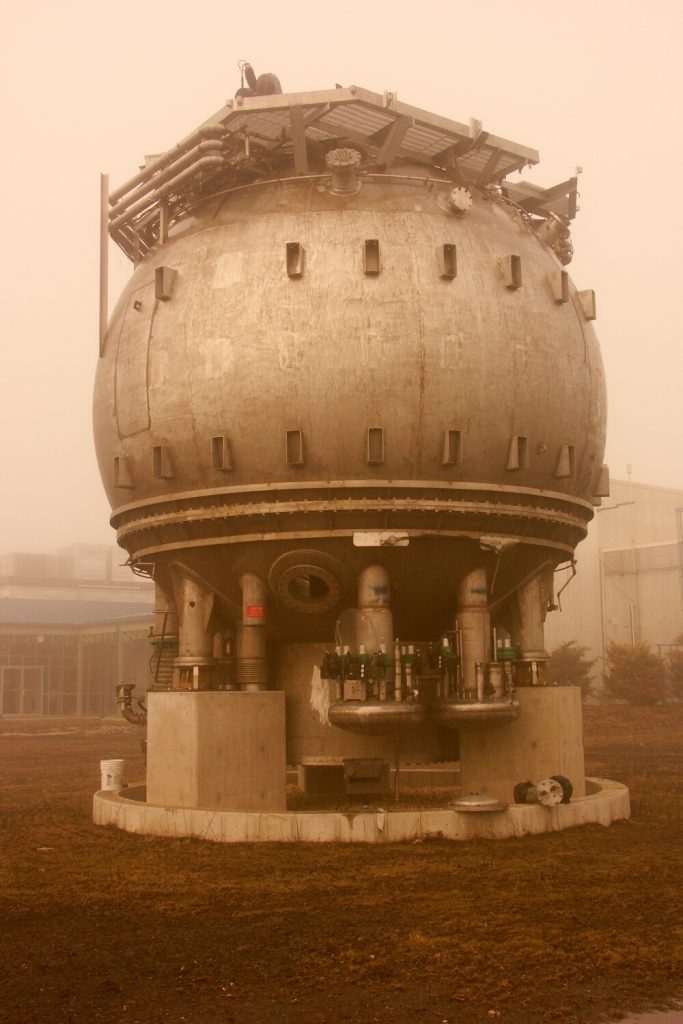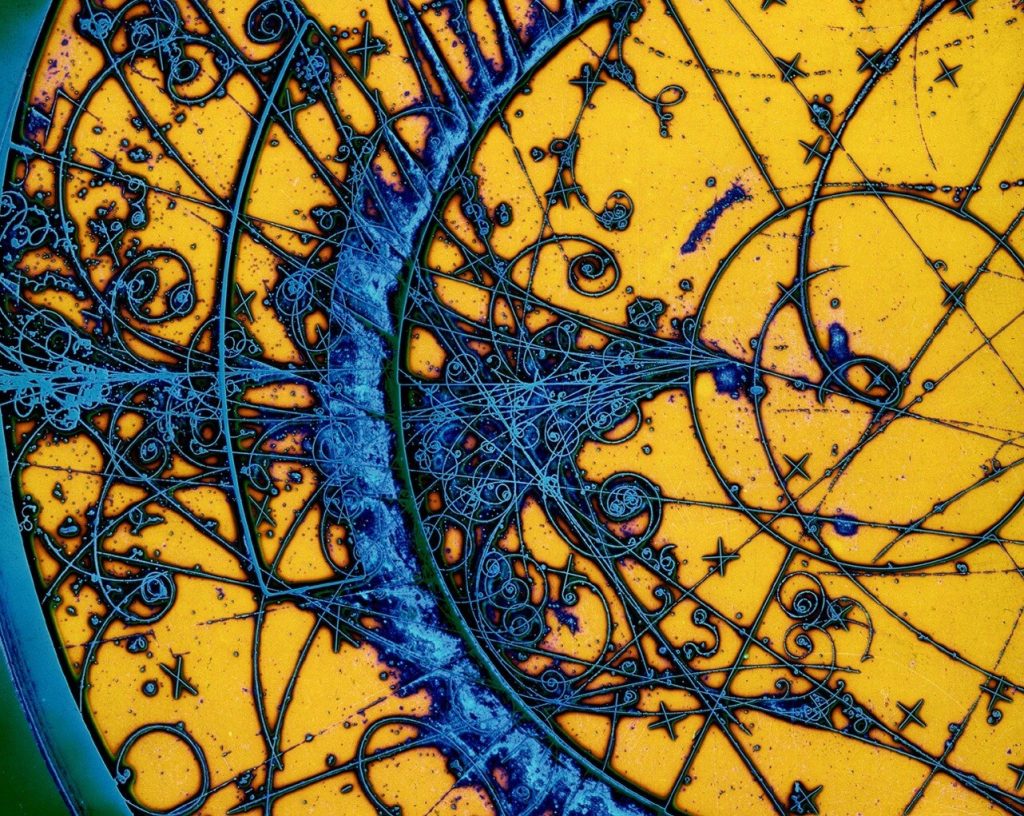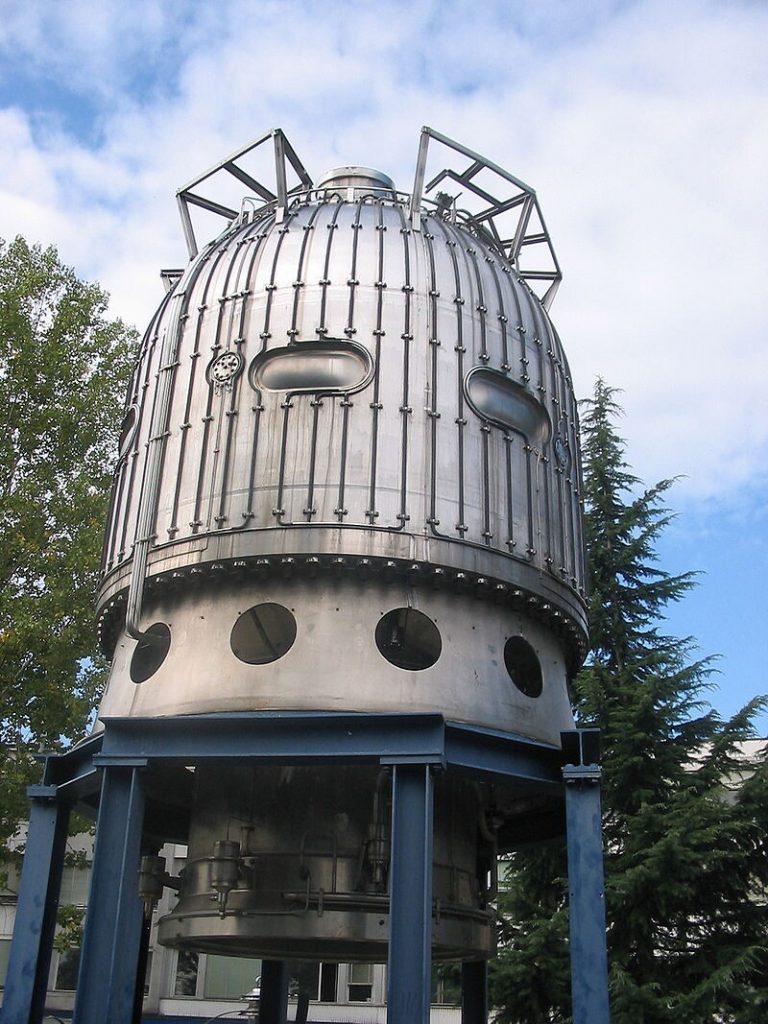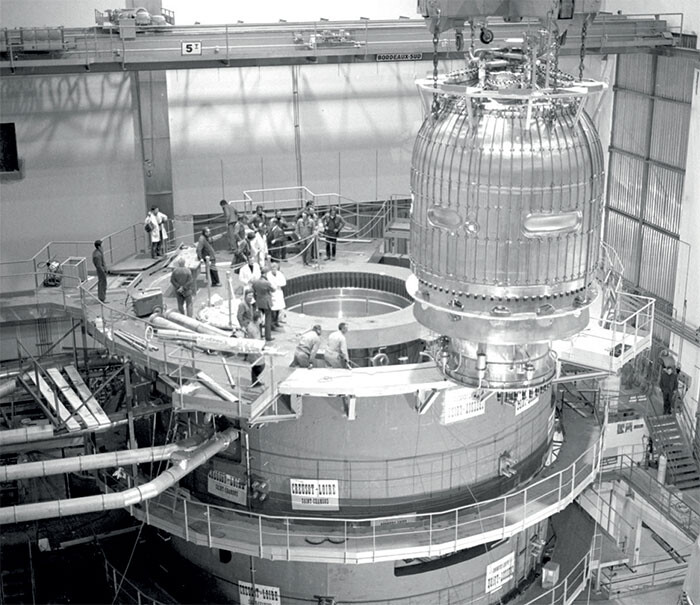The search for subatomic particles; bubble chamber existed before the massive particle accelerators at CERN. Invisible through the microscope, physicists have had to figure out how to detect them and visualize their trajectory. In 1952, Donald A. Glaser invented the bubble chamber, similar to the fog chamber but where the particles left a trail of bubbles in a burning liquid about to boil.
This is how bubble chambers, the prelude to particle accelerators and the digital world work . The difference between one and the other is abysmal. What the Large Hadron Collider is capable of capturing today in less than 2 hours is equivalent to what was generated for 11 years in the Big European Bubble Chamber (BEBC), the first CERN bubble chamber that began its life in 1973.
With current technology, it is relatively feasible to handle this large amount of data, but the 6.3 million images of the bubble chamber allowed among other discoveries to verify the existence of the weak nuclear force. A finding made thanks to these peculiar subatomic particle detection chambers.

The bubble chamber mechanism is based on the relationship of boiling point to high pressure. When the pressure on the liquid is suddenly reduced, the liquid overheats and the particles that pass through the liquid leave a trail of bubbles that can be followed by scientists.
Physicists’ job is to accurately photograph and analyze high-speed particle traces. The key to these bubble chambers is that the density of the liquid medium is high and therefore there is usually a greater probability of collision. During the 1960s, these bubble chambers were as useful to nuclear physics as particle accelerators are today.
The physics behind the bubble chamber cameras
The legend explained that Donald Glaser was inspired by bubble chambers in beer, but the truth is that the 1960 Nobel Prize winner in Physics himself denied the story during a talk, qualifying that at some point he used beer as liquid for heating. The experiment did not work, as it needed a liquid with a low surface tension for the bubbles to appear. Initially, reagent tubes were used, but they quickly increased in size and opted for elements such as liquid hydrogen.
Electrically charged particles create an ionization trail. Around this step, the liquid vaporizes and forms tiny microscopic bubbles. The idea is that the density of bubbles around each trace is proportional to the energy loss of the particle. A piece of information that will help us to know details about it.
To this we must add that the entire chamber is subject to a constant magnetic field , which makes the charged particles travel in a helical path, whose radius is determined by the speed and the charge-mass relationship. That is, depending on the curvature that we have in the image, we can determine the physical properties of the particle.

As the camera expands, the bubbles increase in size, making it easier to see and be photographed. Precisely in the bubble chamber there are a series of cameras that allow to capture a three-dimensional image.
Among the most important discoveries of bubble chambers, we find from the weak neutral current with neutrinos, origin of the theory of the weak nuclear force and the discovery of the W and Z bosons, to recent experiments in the search for massive particles with weak interaction., the so-called WIMP.
BEBC and Gargamelle: CERN’s machines in the 70s

The first bubble chambers were very small, but as the 1980s approached they began to contain up to 20 cubic meters of liquid. More than 100 of these bubble chambers were built around the world, where despite using large superconducting magnets, their cost was several orders of magnitude lower than that of particle accelerators.
Some of the most recognized cameras are the CERN hydrogen camera , with only 30 centimeters; the chamber Saclay , 81 centimeters; the two-meter length at CERN and finally the BEBC (‘Big European Bubble Chamber’), built in the early 70s, with a diameter of 3.7 meters and being one of the most important projects of the time in the field of high energy physics.
The BEBC was a large stainless steel vessel, 4 meters high and 35 cubic meters of liquid (hydrogen, deuterium or a mixture of neon and hydrogen). With a huge two-ton piston the sensitivity was regulated. In 1973, after installing the largest superconducting magnet of the time (3.5 tons ), the first images were recorded. In 1977 , the bubble chamber was exposed to neutrino beams with energies up to 450 GeV.

Another of the most important bubble chambers was Gargamelle, also built at CERN and aimed at detecting neutrinos. At 4.8 meters in length and 2 meters in diameter, it was slightly smaller than the BEBC. Inside it, 12 cubic meters of heavy liquid freon (CF3Br) were used. Thanks to this experiment, between 1972 and 1974 evidence of the existence of quarks, one of the constituent particles of protons and neutrons, was obtained.
The largest of all was built at Fermilab (‘Fermi National Accelerator Laboratory’), in Illinois. At about 15 feet (4.6 meters) in diameter, it is considered the largest bubble chamber of all time, before giving way to other types of construction. At the time, it was considered to manufacture a 25-foot (about 7.6 meters) camera , but due, among other aspects, to technical doubts with the neon that they were going to use, it was not carried out.
The construction of these bubble chambers had an important impact on the reconstruction of the study of physics in Europe after the Second World War. Unlike in later years, where CERN was established in Geneva and projects became increasingly busy, bubble chambers could still be easily transported.
The bubble chambers are considered one of the key ingredients to the success of CERN. It was this symbiosis between CERN and the laboratory community that drove collaboration between researchers and laid the foundations for international cooperation that has subsequently been one of the pillars of projects such as the large particle accelerators.
Also Read | Technology used in motorcycle
